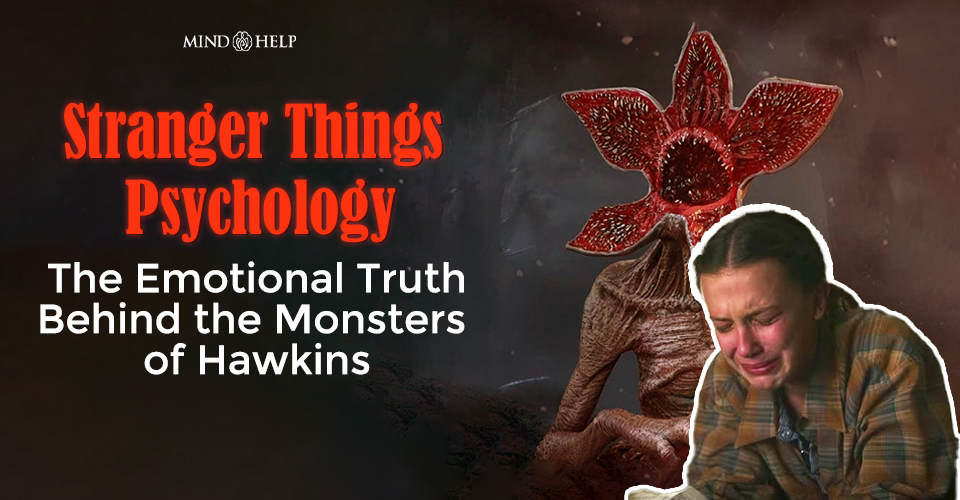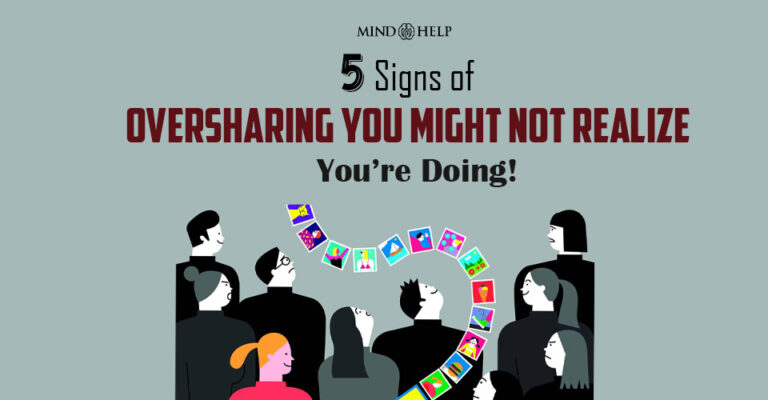Stranger things psychology hits different when you stop watching the show as just supernatural chaos and start seeing it as a breakdown of your own mind.
The more you pay attention, the more you realize that stranger things psychology is really about fear and trauma, identity, memory, and the monsters we build inside ourselves.
Through sharp monster symbolism, raw emotions, and unfiltered darkness, the show becomes a crash course in Stranger Things and mental health.
And when you look at Stranger Things and trauma, you start uncovering the deeper lessons from Stranger Things hiding beneath every scream, portal, and Demogorgon.
Related: 7 Life Lessons from Stranger Things to Help You Survive Real Life
The Upside Down as the Unconscious Mind
If you strip away the sci-fi gloss, the Upside Down is basically your subconscious on a bad day. It’s the place you shove things you don’t want to feel. Pain you didn’t process. Grief you postponed. Memories still sharp enough to cut.
This is where monster symbolism really takes over. The Upside Down is the psychological basement – damp, untouched, and filled with things you swear you have “moved on” from.
But the thing about repressed fear is that it doesn’t go away. It mutates. It waits. And that’s why so much of Stranger Things psychology feels uncomfortably real: it shows how the unconscious becomes dangerous when ignored.
When it comes to the relationship between Stranger Things and mental health, you will notice that it is the very thing that ties everything together.
The characters aren’t just fighting monsters; they are fighting the versions of themselves they hoped would stay buried.

Trauma Through Character Arcs
1. Eleven: Childhood trauma, identity, and emotional repression
When it comes to Stranger Things and trauma, Eleven is at the heart of it. Why? Because she is the proof that childhood suffering doesn’t disappear just because you survived it.
Her past follows her everywhere, be it into relationships, friendships, battles, even her sense of self. She represses emotions because she was taught emotions equal danger.
And yet, every time she tries to love or trust, she is rewriting the story she was forced to live.
2. Will Byers: PTSD, fear triggers, and dissociation
Will is trauma in slow motion. He moves through the world like someone whose body is back, but whose spirit is still trapped somewhere cold.
His dissociation, his panic, the moments when fear grabs him out of nowhere, they are painfully accurate. He embodies how fear and trauma can anchor themselves to your nervous system long after everyone else thinks you are “better.”
3. Max: Grief, guilt, and survivor’s trauma
Max carries grief like it’s stitched into her skin. She is furious, numb, guilty, exhausted – all at once. She pulls away from everyone because pain makes you believe you are safer alone.
Her arc is one of the most honest portrayals of stranger things and trauma, because grief is its own kind of monster. It whispers. It suffocates. It isolates. And it makes you think you deserve it.
Monsters as Psychological Symbols
The monsters aren’t random. They are metaphors, and monster symbolism at its smartest.
a) The Demogorgon: Fear taking shape
When it comes to monster symbolism, the Demogorgon is the physical shape of panic; the thing that comes for you when you are vulnerable, overwhelmed, or unprepared.
It’s the fear that hunts you when you swear you are fine.
b) The Mind Flayer: Collective trauma
The Mind Flayer is bigger than one person. It’s community-level fear. It’s cultural anxiety. It’s the kind of emotional storm that spreads across households, friendships, and generations.
Watching it take over Hawkins feels a lot like watching real-life panic ripple through society.
c) Vecna: Unresolved pain turning dangerous
Vecna is the villain your trauma could become if you avoid it long enough. He is the embodiment of pain without boundaries. When trauma festers, it twists. It lashes out.
Vecna is what happens when suffering hardens into cruelty.
This is how Stranger things psychology works – the monsters are not monsters. They are metaphors wearing teeth.
Related: 7 Ways Vecna in Stranger Things 4 Is An Allegory For Mental Illness
5 Lessons Stranger Things Teaches Us About Fear and Trauma
1. You cannot outrun your darkness, you have to face it.
One of the biggest lessons from Stranger Things is that running from pain just drags it deeper into your skin. Will tries to pretend everything’s normal. Eleven tries to bury her past. Max tries to shut everyone out.
But the Upside Down always finds a crack. The show nails the truth that healing comes from confrontation, not escape. Trauma isn’t a ghost, it’s a place inside you. And you cannot outrun a place that exists in your own mind.
Facing it is terrifying, but it’s the only way the shadows lose their power.
2. Community heals what isolation breaks.
Every season proves the same thing: connection saves people. Hawkins doesn’t survive because of strength, it survives because no one fights alone. This is one of the core lessons from Stranger Things and a cornerstone of Stranger Things and mental health.
Trauma isolates, but healing doesn’t happen in isolation. The show reminds you that love doesn’t magically erase pain, but it gives you something solid to hold while you are shaking.
It’s the people who sit beside you during your darkest moments who help you climb out of them.

3. Your trauma isn’t your fault, but healing is your responsibility.
When it comes to fear and trauma, remember what this show is all about. You are not responsible for what hurt you, but you are responsible for what you do with that hurt.
Eleven didn’t choose the lab. Will didn’t choose the Upside Down. Max didn’t choose her grief. But each of them chooses healing, even when it’s messy, painful, and slow.
The show doesn’t glamorize recovery; it shows the cracks, the backslides, the nights when everything feels impossible. But it also shows resilience as a daily choice.
4. Fear has a voice, and it’s telling you something important.
Fear isn’t weakness. It’s information. It’s a warning siren pointing toward the parts of yourself that need attention. Stranger Things shows fear as a compass, not a curse.
This lesson ties directly into fear and trauma, because trauma makes your body sound alarms even when the threat is gone.
Listening to those alarms, understanding them, and responding with compassion is one of the most underrated lessons from Stranger Things. You don’t need to silence fear. You need to learn its language.
5. Healing is the art of reclaiming your own story.
The final big lesson from Stranger Things is that healing is ultimately about rewriting the narrative. Trauma steals your voice; healing gives it back.
Eleven learns to define herself outside the lab. Will finds joy again. Max chooses to live even when life feels unbearable. Every character proves that reclaiming your story is an act of rebellion, and an act of survival.
This is the core of Stranger Things and mental health and the emotional heartbeat of the series: healing is not becoming someone new; it’s becoming yourself again.
Why Stranger Things Resonates With Audiences
The show is this popular because it taps into the universal fears we pretend we have outgrown. The fear of losing someone. The fear of not being enough. The fear that the darkness inside us might be bigger than the light.
Add in the 80s nostalgia – the music, the friendships, the small-town warmth – and you get emotional comfort wrapped around existential dread.
Stranger things psychology works because the show doesn’t just entertain; it exposes. And underneath the monsters, it’s really about us, and our loneliness, our love, our coping, and the parts we hope no one ever sees.
Bottomline
At the end of the day, this popular show teaches us one unforgettable truth: the Upside Down exists inside all of us. We carry places we don’t want to enter, memories we don’t want to relive, and monsters we don’t want to name.
Related: Is Marvel’s Moon Knight A Superhero With Mental Illness?
But fear loses its teeth when faced. Trauma loses its shadows when spoken. And healing begins the moment you stop running.
Because the darkness inside you doesn’t make you broken, it makes you human. And like everyone in Hawkins learns: you don’t defeat the monsters alone. You defeat them together.








